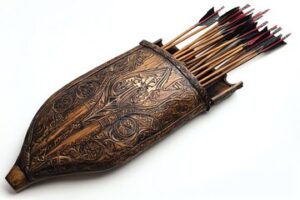Movers play a crucial role in the process of relocating from one place to another, offering a service that eases the burden of physically transporting belongings. The process of moving can be both exciting and stressful, often marking the beginning of a new chapter in life. Whether it’s moving to a new home, office, or business location, the services provided by movers help streamline the transition and ensure that belongings are transported safely and efficiently. Contact Movers Meridian ID for professional help.

Movers are professionals who specialize in packing, loading, transporting, unloading, and unpacking items. Their expertise in handling fragile, heavy, and valuable possessions reduces the risk of damage and provides peace of mind to individuals and businesses alike. The demand for moving services has grown steadily over the years due to the increasing need for mobility and the desire for convenience. People often turn to movers when they face complex or large-scale relocations, knowing that the process involves more than just packing and loading boxes. The coordination required to move furniture, appliances, and personal items without causing damage or loss requires a level of skill and experience that professional movers bring to the table.
The moving process typically begins with an assessment of the items to be transported. Movers often provide consultations to determine the volume of belongings, the distance to be traveled, and any special requirements such as fragile items or oversized furniture. This initial step allows movers to plan effectively, ensuring that they have the appropriate materials and equipment to handle the job. Proper planning is essential in minimizing the risk of damage and ensuring that the move is completed within the agreed timeframe. Once the assessment is complete, the packing phase begins. Professional movers are trained to handle various types of items, using specialized packing materials such as bubble wrap, foam, and reinforced boxes to protect fragile and valuable objects. Items like glassware, electronics, and artwork require extra care and attention to ensure they arrive at their destination intact. Movers often use labeling systems to keep track of items and make the unpacking process more organized and efficient.
Loading is another critical phase where the expertise of movers becomes evident. Heavy furniture, appliances, and boxes need to be carefully maneuvered to avoid damage to the items and the property. Movers use tools such as dollies, straps, and ramps to lift and secure items in the moving vehicle. Proper loading techniques help distribute weight evenly, reducing the risk of shifting and damage during transportation. The transportation phase requires careful driving and navigation. Movers are often familiar with the best routes to take, avoiding traffic and road hazards to ensure a smooth and timely delivery. Professional drivers are trained to handle large vehicles, ensuring that items remain secure and stable throughout the journey. Communication between the moving team and the client is crucial during this phase to address any changes or delays promptly.
Unloading and unpacking complete the moving process. Movers carefully remove items from the vehicle, taking care not to scratch floors or damage walls in the process. The placement of furniture and boxes is usually guided by the client’s instructions, ensuring that the new space is set up according to their preferences. Professional movers often go the extra mile by assembling furniture and installing appliances, making the transition into the new space more comfortable and less stressful for the client. The value of professional movers extends beyond physical labor. Their experience in handling logistics, problem-solving, and customer service helps alleviate the emotional and physical strain associated with moving. Clients benefit from the efficiency and professionalism that movers bring, allowing them to focus on settling into their new environment rather than worrying about the details of the move.
Challenges often arise during the moving process, and experienced movers are equipped to handle them. Weather conditions, traffic delays, and unexpected obstacles such as narrow doorways or staircases require quick thinking and adaptability. Movers are trained to anticipate these challenges and implement solutions that minimize disruptions. Insurance and liability coverage provided by moving companies offer additional peace of mind to clients, ensuring that any damage or loss incurred during the move is appropriately addressed. The cost of hiring movers varies depending on factors such as the distance of the move, the volume of items, and any additional services required. While some people may hesitate to hire movers due to cost concerns, the time and effort saved often outweigh the expense. The ability to rely on professionals to handle the heavy lifting and logistics allows clients to focus on other important aspects of their relocation, such as adjusting to a new neighborhood or setting up a new business location.
The moving industry continues to evolve with advancements in technology and changing customer expectations. Many moving companies now offer tracking systems that allow clients to monitor the progress of their move in real-time. Digital inventory management systems help ensure that no items are lost or misplaced during transit. Customer service has also become a key focus, with movers striving to provide a positive and stress-free experience from start to finish. Specialized moving services have emerged to cater to specific needs. For instance, some movers specialize in handling delicate items such as antiques, pianos, and fine art, while others focus on long-distance or international moves. Eco-friendly moving options, such as reusable packing materials and fuel-efficient vehicles, have also gained popularity as clients become more environmentally conscious. The professionalism and dedication of movers contribute significantly to the overall success of a relocation. Their ability to work efficiently under pressure, solve problems on the spot, and maintain a positive attitude helps create a smooth and pleasant moving experience for clients.
The importance of movers extends beyond residential relocations. Businesses often rely on movers when expanding, downsizing, or reorganizing their operations. The efficient transportation of office furniture, equipment, and documents requires careful planning and execution to minimize downtime and ensure business continuity. Movers play a vital role in facilitating these transitions, helping businesses adapt to new spaces and operational requirements. The emotional aspect of moving should not be overlooked. Relocating to a new home or office often involves a mix of excitement, anxiety, and nostalgia. Movers provide more than just physical assistance; they offer reassurance and support during a potentially stressful time. Their ability to handle the details of the move allows clients to focus on adjusting emotionally and mentally to their new environment.
Seasonal trends and economic factors also influence the moving industry. The demand for movers tends to increase during certain times of the year, such as the summer months when families prefer to relocate while children are out of school. Economic conditions, housing market trends, and corporate relocations also impact the volume of moving activity. Movers must adapt to these fluctuations, adjusting their services and resources to meet changing demand. Training and professional development are essential in maintaining the quality of moving services. Movers are often required to undergo training in proper lifting techniques, equipment handling, customer service, and safety protocols. Continuous learning ensures that movers remain skilled and knowledgeable, capable of handling a wide range of moving scenarios. The physical demands of the job require strength, endurance, and attention to detail. Movers often work long hours, navigating challenging environments and handling heavy loads with care and precision. Their ability to work as a team, communicate effectively, and maintain a positive attitude under pressure contributes to the overall success of the move.
The future of the moving industry will likely be shaped by technological advancements and changing customer expectations. Automation, artificial intelligence, and data analytics are expected to play a greater role in optimizing moving processes and improving customer experiences. Virtual consultations, automated inventory tracking, and AI-driven route optimization are some of the innovations that could enhance the efficiency and accuracy of moving services. Customer preferences are also evolving, with a growing emphasis on convenience, transparency, and environmental responsibility. Movers who adapt to these trends and prioritize customer satisfaction will likely remain competitive in a changing market. The role of movers in facilitating life transitions cannot be overstated. Their ability to manage the logistical, physical, and emotional aspects of moving provides invaluable support to individuals and businesses. The trust and confidence that clients place in movers reflect the essential nature of their work and the positive impact they have on the moving experience. Whether relocating across town or to a different region, the expertise and dedication of professional movers make the process smoother, more efficient, and less stressful.



